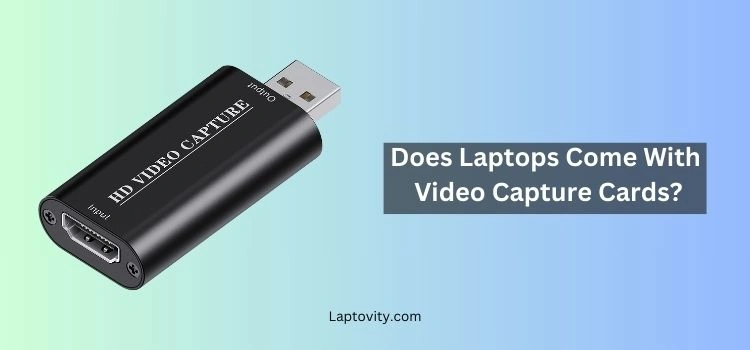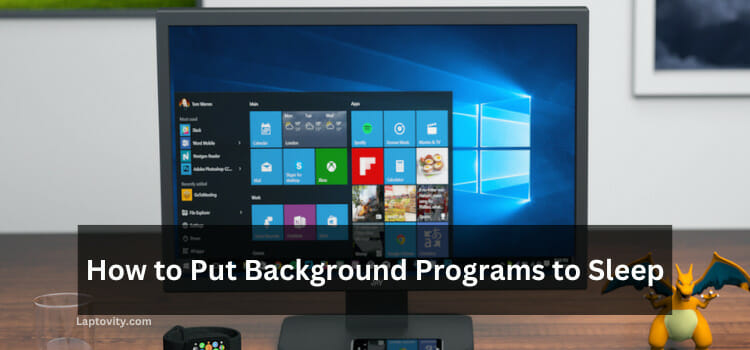Last Updated on August 2, 2025 by Nazim

In today’s world, content creation, live streaming, and video editing have become more accessible than ever before. Many people are diving into activities like gaming, creating tutorials, or recording high-quality videos for platforms like YouTube and Twitch. With the demand for top-notch content creation rising, the question often comes up: “Does my laptop come with a video capture card?” This is an important question to ask if you’re considering capturing video directly from external sources such as cameras, gaming consoles, or other video devices.
Let me start by addressing the main query upfront: No, most laptops do not come with built-in video capture cards. However, there are several nuances to this, so let’s break down why this is the case and what options are available for video capturing on laptops.
What is a Video Capture Card?
Before diving deeper into the specifics of laptop compatibility with video capture cards, it’s important to understand exactly what a video capture card is and what it does.
A video capture card is a device that allows you to capture video from an external source, like a gaming console (e.g., PlayStation, Xbox), a camera, or even another computer. These cards convert the video signal from analog or digital formats into a format that your computer can understand, process, and record.
For instance, if you’re a gamer wanting to stream your gameplay or record a gaming session, a video capture card can take the video feed from your gaming console or PC and send it to your laptop for further processing or streaming.
How Does a Video Capture Card Work?
- Video Input: The capture card receives a video signal from an external device.
- Conversion: It converts the video signal into a digital format that can be processed by your laptop.
- Output: The captured video is sent to your laptop’s software or streaming platform.
Capture cards are widely used by professionals in fields like video production, gaming, and even live event broadcasting. However, laptops don’t typically come with a dedicated capture card, so you would need to purchase one separately if you want to start capturing video.
Why Don’t Laptops Come with Built-in Video Capture Cards?
The reason most laptops don’t come with built-in video capture cards is largely due to the purpose and design of laptops. Let me explain a few key factors:
1. Specific Use Case
Video capture cards are primarily used by gamers, streamers, content creators, and video producers. These users typically need specialized hardware that is external to the laptop. Since not all users have these needs, it would be inefficient for laptop manufacturers to include a built-in capture card, which would increase the cost for those who don’t require such a feature.
2. Hardware Demands
Capture cards require specific ports and internal components to function correctly. For instance, HDMI inputs, which are common in external capture cards, aren’t usually part of standard laptop designs. Including these components would require redesigning the internal architecture of laptops, which would affect their size, portability, and cost.
3. Performance Optimization
Laptops are optimized for mobility and general-purpose computing. Adding a built-in capture card could compromise performance, battery life, and portability, which are key selling points of most laptops.
How to Capture Video on a Laptop?
If your laptop doesn’t come with a built-in video capture card, don’t worry! There are several ways to capture video effectively. Below are your options:
1. External Capture Cards
External capture cards are the most common solution for adding video capture functionality to your laptop. These devices plug into your laptop through USB, Thunderbolt, or other ports, and they provide video input options such as HDMI, component, or VGA.
Popular external video capture cards include brands like Elgato (known for their HD60 and Cam Link models) and AVerMedia. These external devices are easy to use, portable, and typically come with software to help you record, stream, or process the captured video.
2. Built-in Webcam or Camera
Many laptops come with built-in webcams that can capture video. While these webcams typically aren’t of the same quality as external cameras used with capture cards, they can still serve basic video recording needs for things like video calls, casual vlogging, or low-res streaming.
If you’re just looking to capture simple video for online meetings or casual content creation, the built-in webcam will suffice, though it won’t compare to the quality that you get from an external capture card.
3. Screen Recording Software
If your goal is to capture screen video (for tutorials, gameplay, or presentations), you don’t need a capture card at all. You can simply use screen recording software, which is built into most modern laptops. Tools like OBS Studio, Camtasia, and Bandicam allow you to capture what’s happening on your screen and save it as video files. These solutions are great for recording gameplay, creating tutorials, or even recording Zoom meetings.
4. USB Video Capture Devices
For capturing video from analog sources, a USB video capture device can be used. These devices plug into your laptop’s USB port and allow you to input video from older devices like VCRs, camcorders, or analog cameras.
Advantages of Using External Video Capture Cards
If you’re a serious gamer, content creator, or someone who wants high-quality video capture, an external capture card can significantly improve your setup. Here are some key advantages:
- Higher Quality Captured Video: External capture cards usually support higher resolutions and frame rates (up to 4K at 60fps), making them ideal for streaming or recording professional-quality video.
- Real-Time Video: Capture cards can handle real-time video encoding, which is crucial for live streaming or recording high-performance video without delay.
- No Need to Upgrade Laptop: Using an external capture card allows you to capture high-quality video without needing to upgrade your laptop’s internal components.
Final Summary
To summarize, while laptops typically do not come with built-in video capture cards, there are numerous ways to capture video on your laptop, including the use of external capture cards, built-in webcams, or screen recording software. If you’re looking to capture high-quality video for streaming, content creation, or other professional needs, an external capture card is the most reliable and effective option.
Make sure to choose the right type of video capture device based on your specific needs, whether you’re streaming, recording gameplay, or creating tutorials. And remember, capture cards are not only for gamers—they’re also an essential tool for anyone serious about video production.
Frequently Asked Questions (FAQs)
Do I need a capture card to stream on Twitch or YouTube?
If you’re streaming gameplay or external video, a capture card is highly recommended for better video quality. However, you can also stream directly from a gaming laptop or PC without one by using software like OBS Studio.
What is the difference between a built-in webcam and a video capture card?
A built-in webcam is ideal for capturing video for video chats or casual recording, but the quality is usually lower than what a capture card can offer. A capture card is designed to record or stream high-quality video from external sources like gaming consoles and cameras.
Can I capture a 4K video with a capture card?
Yes, there are many external capture cards that support 4K resolution at 30fps or 60fps, making them suitable for high-end content creators.

Nazim is a tech enthusiast and expert in laptops, computers, and cutting-edge technology. With a degree in Computer Engineering and experience as a Data Analyst, Nazim combines deep technical knowledge with real-world insights to help readers make informed decisions about their tech needs.


